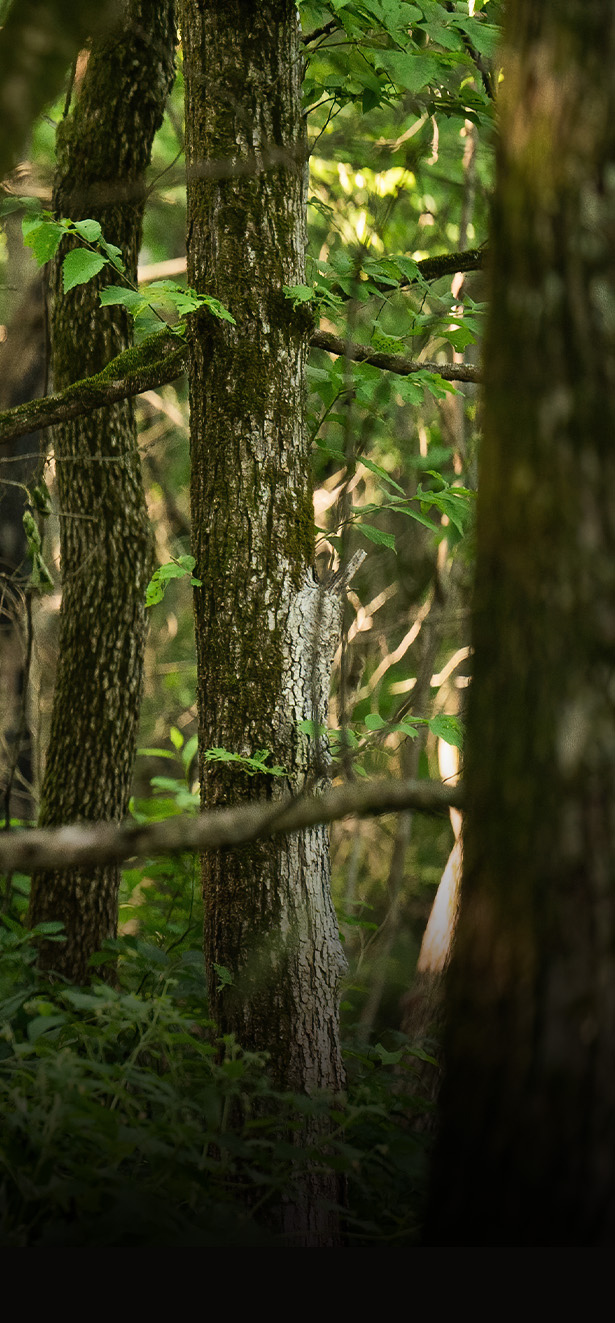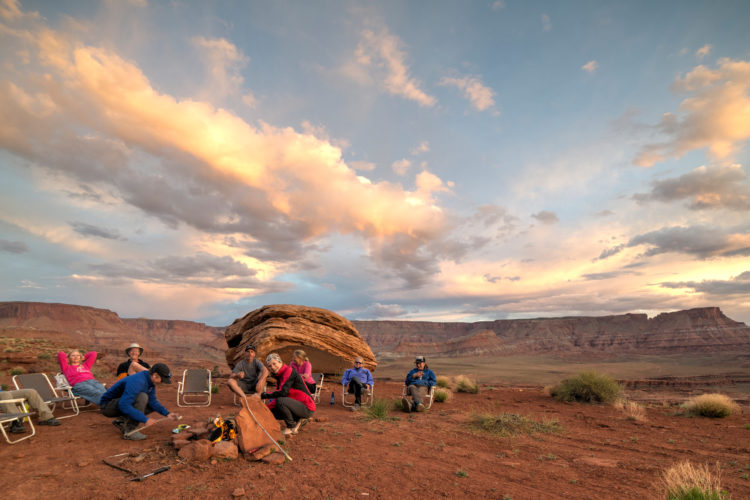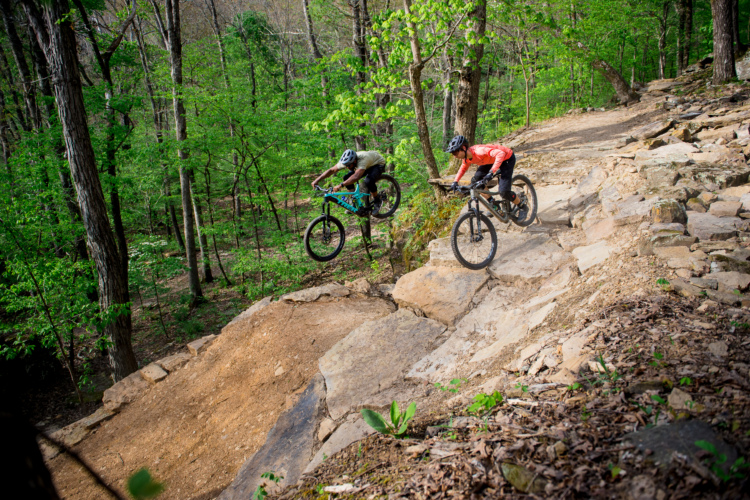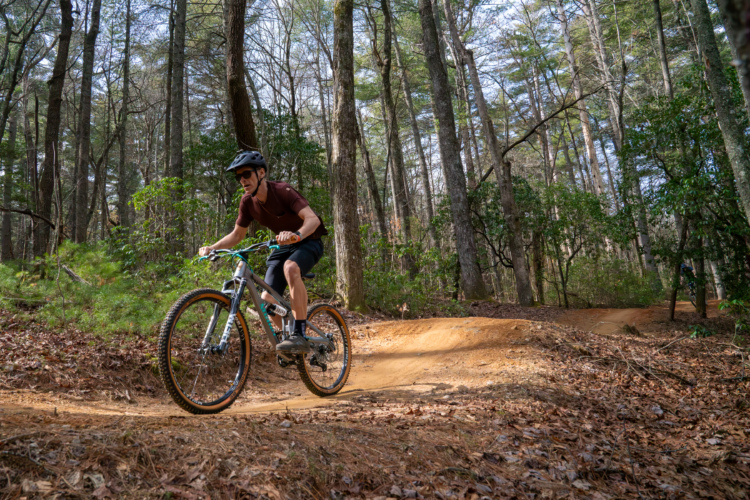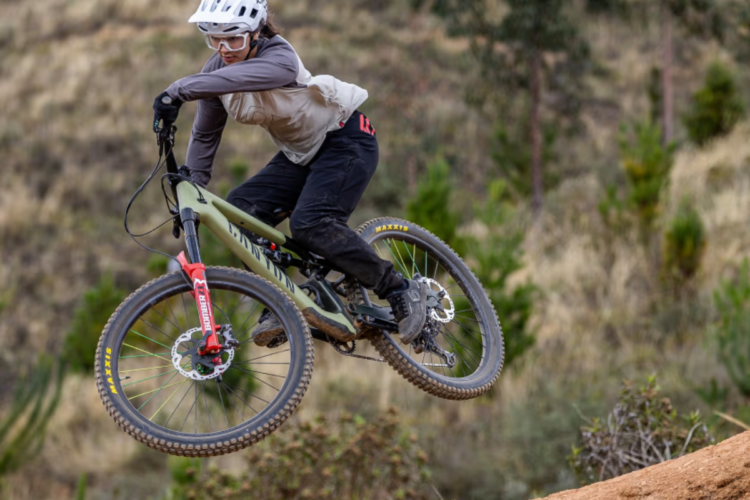
Racing plays a major role in my life. I can’t tell you the exact number of races I’ve entered, but it’s in the hundreds. Everything from classic XC races; 3-, 6-, 12-, and 24-hour endurance events; 50+ milers; bikepacking; enduro; I’ve done them all. Even friendly rides often turn into unofficial races, since my friends and I are competitive. My big motor suits endurance racing particularly well, so it’s probably not surprising that out of all the formats, stage racing has emerged as my favorite. I enjoy the physical, mental, and equipment challenges presented by racing over multiple days. It’s also an excuse to ride fantastic singletrack with a bunch of like-minded mountain bikers.

My first stage race was the BC Bike Race (BCBR) in 2014 — it’s an incredible event both in terms of the organization and the quality of trails. I wouldn’t trade the experience for anything. Well, maybe the part where I got food poisoning at the final banquet, but that’s another story. In 2015 and 2016, I raced the Trans-Sylvania Epic (TSE), in Central Pennsylvania. The trails there came in basically one flavor — rocky and technical. That’s not everyone’s cup of tea, but as a born-and-bred East Coast rider, I loved it. The BC Bike Race runs with German-like precision, but the TSE is decidedly more laid back.

For years, I wanted to do the Pisgah Stage Race (PSR), but the timing didn’t work out. The Sea Otter Classic overlaps the race, and it’s an important event for us to cover here at Singletracks. With Sea Otter scheduled a week later this year, I could finally make it to the PSR.
I posted daily recaps along with videos from Blue Ridge Adventures’ media team during the race, so I’ll keep my thoughts below brief. However, I wanted to get different perspectives from other people in the race. To do so, I interviewed Todd Branham, the promoter of the PSR; Jena Page Greaser, the Pro Women’s winner; and my friend Mark Baldwin, a first-time stage racer.
My Pisgah Stage Race
Going into the race my technical skills were razor-sharp thanks to a trip out to Moab for spring Outerbike. I also had plenty of miles under my belt, but apart from the Huracan 300, I hadn’t done any real racing this year. Nagging injuries to my knee, shoulder, and hands had taken a toll as well, so I really didn’t know what to expect come Stage 1. Luckily, the day went off without any drama, and it was smooth sailing all week. The weather was warm and dry, and the trails were in phenomenal condition. There may have been an occasional sprinkle or two throughout the week, but nothing like the full-on deluge of rain Pisgah is infamous for.

Stages 1 and 2 went pretty well for me, but I knew I could do better. Both days, I caught the same few riders on singletrack portions of the route. If I wanted to ride the singletrack uninterrupted, I knew had to get in front of them at the start and turn myself inside out on the gravel sections to stay in front. So that’s just what I did for Stages 3-5; I staked out a spot on the start line closer to the front and pushed hard on the gravel sections. This strategy worked out, which allowed me to ride the singletrack faster, with less interference.

At the end of the week I racked up 15 hours and 32 minutes on the bike, landing me in 28th place out of 50 in the Open Men category. I fared better in the Enduro competition, taking 23rd out of 135 men. Had I not dropped my chain on stage two’s enduro segment, I’m confident I could have finished in the top 20.
Todd Branham — Owner and Race Director, Blue Ridge Adventures

Todd Branham is as cool as a southern breeze. He has a relaxed demeanor and a drawl that eases nervous racers. When he’s not organizing one of Blue Ridge Adventures’ (BRA) races, Todd is out in the woods building flowy singletrack as co-owner of the Long Cane Trails company.
Aaron: How’d you get into race promoting?
Todd: Working at Outspokin Bikes in Columbia, SC, in the early 90s while attending college got me involved. I promoted a few events through the shop and began to think, “This needs to happen in Pisgah.” I ran the first Swank (a 35-mile race held in November) while I still lived in Columbia. I quickly moved to Brevard, NC, and the following year started ORAMM (Off Road Assault on Mt. Mitchell).
Aaron: What about trail building? How’d you get started with that?
Todd: I wanted to give back directly to the districts of Pisgah where I was promoting races. At the time we were sending checks to the USFS headquarters in Los Angeles. Money collected from our events was going to projects across the US that currently needed funds.
The only way I could impact locally was trail work. I started on a voluntary trail crew. Four years later I fell in love with trail sculpting and joined Long Cane Trails, that was part of the professional trail building association. Today I’m half owner of Long Cane Trails. We are slinging trail all over the Southeast and have worked in two countries, we’re about to add a third — Romania. The fees we send to the FS nowadays go back to the district where they were collected.
Aaron: What other races do you promote?
Todd: One race lead to another and today we promote eight events and help with 10 other local events.

Aaron: What stage races have you done personally?
Todd: I did my first stage race in Peru back in the late 90s. It was only two days but they were long days and at 16,000 feet [elevation]. Then I played around a few years with Tour De Berg and the Fall Tour, which are two great events in the Southeast that are kept a bit underground for various reasons.
Finally, I did the one that inspired me — the American Mountain Challenge. This was a one-time event in Brian Head, Utah. Four days of ultra organization, great routes, and not too long. Now I was inspired! Next came El Reto Del Quetzal, which remains my favorite and I’ve done it five times. I’ve also done the Trans-Sylvania Epic and BC Bike Race twice.
Aaron: What have you learned from other races that you’ve applied to PSR?
Todd: Don’t make it a survivalist event. Shorter stages and lots of singletrack is the formula for the masses.

Aaron: How long has the PSR been going?
Todd: 2018 will be the 10th annual Pisgah Stage Race.
Aaron: How has it evolved over the years?
Todd: We started as a four day event. A time trial and three hard days. The courses have changed a lot, too. Pisgah is naturally harder than most people are accustomed to, is the reality. It takes riders a few days to warm up to how to ride these trails. Shorter stages with the highest quality trails is now the focus. “FLOW” is the key word at BRA. The old elevation profiles looked like a racing heartbeat line. The new ones look like sexy ripples of ocean waves. The climbs are demanding but not killers.
The event started in October. Snow moved it back to September. We finally landed it in mid-April. We found that for an event that requires a lot of preparation, it works better for most on the front end of their race calendar. Most riders come out of the winter itching to do something. For us the event is much easier to run in the spring. Pisgah is a temperate rainforest and it gets thick and overgrown in the fall.

Aaron: 2017 seemed to be a breakout year for the race. What do you attribute that to?
Todd: Lots of marketing, and it was just time. After years of figuring things out we have learned a few tricks. The biggest contribution was the great weather in 2016. Great videos and pictures of dry events look more exciting than mud covered racers, especially in multi-day events. We expect to sell the event out in 2018.
Aaron: With the race doubling in size this year, were there any growing pains?
Todd: Our footprint has been tweaked over the years, so we were prepared for the bump up in racers. We have other events that our permit allows us to have 500 racers, so we know what it takes to handle lots of riders. The FS limits this event to 200 people, and we dig that. You get to know lots of people through the week, and this brings community to an event like the PSR where you are around the same people six days in a row.

Aaron: It seemed like a lot of racers were international. How are they finding out about the race?
Todd: I am spreading the word on all my travels. I share our videos at most of the stage races I attend, as I know the race directors. We all help one another as we know it’s hard to reach racers internationally. The biggest factor is Pisgah has finally gotten the recognition it deserves. For the first time, riders are making their way to the Southeastern US to see what everyone is talking about… and they love it!

Aaron: Any hints as to what’s in store for 2018?
Todd: Pisgah Stage Race will be a dynamic international field I expect. We are not adding any events. We are concentrating on maintaining one of the highest quality events on the planet in 2018.
Jena Page Greaser — Winner, Pro Women

Aaron: How long have you been riding and racing?
Jena: I have enjoyed cycling my entire life; my Dad used to transport me on the front of his bicycle before I could walk. Since college I’ve dabbled in and out of triathlons, off-road triathlons, and local mountain bike and cyclocross events. It is only in the past two years that I have focused solely on the sport at the professional level.
Aaron: How would you describe your riding style?
Jena: Cross country; I love climbing and descending! I am fast out of the gun and relentless. I’m known as “the fighting crab” in the professional cycling world 😉
Aaron: Was this your first time in Pisgah?
Jena: Yes.
Aaron: What did you think of the trails? How’d they compare to your trails at home?
Jena: The definition of mountain biking! True grit terrain; a solid mix of challenging, technical, rugged trails, and fast, flowy fun! It’s how mountain biking should be!
They’re similar to what I grew up riding all over New England. Diverse. Lots of rocks and lots of roots! However, it’s far different from my current residence of Invermere, BC, which are mostly buffed out singletrack trails (similar to the hand-cut Bracken Mountain trail raced on for the final enduro stage at Pisgah). (Long Cane Trails, Todd Branham’s company, built the Bracken Mountain trail.)
Aaron: Did you have a favorite stage? Or a particularly memorable trail?
Jena: Stage: Singletracks’ Stage 2. Trail: I loved descending Stage 5’s Daniel Ridge and climbing Stage 2’s Squirrel to Buckhorn Gap. Farlow Gap and Pilot Rock descents are by far the most memorable descents due to their technicality and sheer gnar factor. And how could one forget the smooth, flowy, Super-D-styled descent down Bracken Mountain?! Laurel Mountain’s climb was the most challenging ascent and I look forward to testing my mental and physical skills again on these trails next year!

Aaron: You absolutely dominated the week winning every single stage (nice work!), and put almost an hour and a half on second place. How did you prepare for the race?
Jena: Endurance stage racing is all new to me. My coach, Eric Bailey with Catalyst Coaching & SportLab, knew that Pisgah was a peaking event. All winter long he had me putting in a lot of hours building strength at the gym and riding the rollers indoors. Base miles, no matter how you get them, are key! He helped condition my mind and body outside of “trail time” to be conditioned mentally and physically inside of trail time. I competed in the Moab Rocks 3-day stage race, March 25th-27th, as a priming event for Pisgah.

Aaron: You also had a really strong showing in the enduro category, taking 3rd overall for the week. How do you go so fast on unfamiliar trails?
Jena: Honestly, just turned the brain off over-thinking mode and “let it go.” I repeated to myself “Breath. Focus. Fast. Fun!” I turned the “fear of unknowing” what was to come around each turn into excitement as to what new terrain lay ahead! It is always so crazy what I’ve been able to hit at speed, without “seeing” the course or feature ahead of time.
On the pro mountain bike courses the laps are very short and you pre-ride the course several times (just like in cyclocross). I get how this is beneficial, but at the same time, the downside of this is that it becomes really easy to turn the mind into negative thinking/hyperfocus mode: zone in on some aspect of the course you don’t like or are nervous about, instead of just letting the brain and body go into “just ride” mode! When we overthink on the bike and in life, that is when we get into trouble 😉
Aaron: What advice would you give to someone considering signing up for the PSR?
Jena: Could not have asked for a better race to have as a first-timer-five-day-stage-racer!!! It sure was the experience of a lifetime, of which I will ALWAYS have fond memories. Pisgah has got me hooked; true-grit style trails, breathtaking scenery, and one loving community filled with happy, kind people. Todd, the BRA crew, and volunteers were AMAZING! Everyone on board was consistently helpful and friendly. The event was insanely fun and well-organized. Pisgah met and exceeded my expectations; yes it is world class and yes, it is bad-ass!
Aaron: Will you be back in 2018 to defend your title?
Jena: Would love to! Dylan and I have quite a few stage races in North America — and the World — on the bucket list to participate in over the next few years, and Pisgah sure set the stage for stoke!
Mark Baldwin — First-Time Stage Racer

Mark is saltier than a can of sardines with a wit drier than a bottle of Cabernet — which probably explains why we’re such good friends. We’re a fairly even match on the bike as well — Mark edges me out on the climbs and I’ll get him back on the descents. We’ve done tons of races together, and he was instrumental in getting me to sign up for the Huracan this year.
As much racing as Mark has done, the PSR was his first stage race, so I thought it would be interesting to get his thoughts on the event.
Aaron: This was your first stage race, right? But you’re no stranger to racing. What are some of your favorite events?
Mark: Yes, this was my first stage race. I’ve been racing since about 1999. My first beginner race was in south Georgia and oh my god, it was the hardest thing I have ever done in my life. I stopped, seriously six times on two 5-mile laps, and almost walked off the course. Now I enjoy doing endurance stuff like the Huracan 300; I’ve attempted that four times and actually finished twice. My best time was 47 hours.
I used to do a lot of cross country racing and moved on to a bunch of 6-hour races. I got a little bored with those so I started doing 50-mile races. Fool’s Gold, Lula Lake Land Trust 50 on Lookout Mountain. Whatever I felt like doing that year. ORAMM (Off-Road Assault on Mt. Mitchell) is another one. Oh, I race on Strava, a lot. Just did a 3-hour at Fort Yargo [in Winder, GA].
Aaron: How often do you get up to Pisgah to ride?
Mark: I don’t get to Pisgah very often. It had been three years since my last visit. I wish I could get there more… I’ll work on that. I was very familiar with what was in store for me. I was very anxious and nervous about a few sections that I knew we were doing in the race.
Aaron: What did you do to prepare for the race?
Mark: My preparation was very disappointing. I had done the Huracan 300 back in February and it took me quite a while to recover from that, like 6 weeks. Every time I’d go out to ride, I felt weak and drained. I finally started coming around the middle of March with only four weeks or so before the stage race. By that time I could only do what I could do and went with it. I tried to lose 10 pounds.
Aaron: How’d your race go?
Mark: How’d my race go? Not as well as I hoped. I was mid-pack just about every day. The last day I felt the best. I was only five minutes behind you, Aaron Chamberlain 😉 . You were my motivation each day. Trying to catch you, but I never did.
I was also racing other people in my head that weren’t in my class. Each day you’d end up around the same people — funny how that works. The first four days were quite a struggle. The trails were technical, the climbs were tough, the descents were rough. I loved it all, especially when each day was over. Ha. I could feel my lack of training. I thought the Huracan would get me through at a faster pace, but I was wrong.

Aaron: You rode a very XC hardtail for the race. Any regrets?
Mark: Um, yeah, sure. I had just got my new hardtail and nobody was telling me not to race it. I raced it against your better judgement. Haha. Also, it’s the only bike I have, sooo… If I were to do it again next year, I would add more travel to my fork (Mark is currently running a 100mm fork).
The first race day was literally the third or fourth ride on my new Rocky Mountain Vertex. I had it dialed in pretty good. I had back pain the first day, but then raised my bars a little and the next four days, I didn’t have any issues with it. There were a handful of us out there on hardtails.
The climbing was great, but the Enduros took their toll on me. I didn’t even try to get a great time. I was trying to end up injury free — and I did. I walked and ran a few sections. I was worried about twisting an ankle and going over my bars. I thought I handled things just okay. My new freakin’ drivetrain worked amazingly. But, yes, a full suspension would have been great.
Aaron: What did you think of the stages? Which one was your favorite? Do you have a favorite trail?
Mark: I liked all of the stages. I think [Stage 4] with Pilot Rock was my favorite. The one where Drunk Cyclist posted my picture on Instagram. Me with my little hardtail and narrow bars hugging a tiny tree. I also rocked out the last stage, that was the most fun. Squirrel Gap was my favorite trail, the one we did both ways.
Aaron: Would you do the Pisgah Stage Race again?
Mark: YES I would. I’m considering getting the “go ahead” for next year. The daily chores of cleaning the bike, checking and making sure nothing is broken, getting your clothes and water bottles ready for the next day when all you want to do is relax after the race — it takes its toll. I know, it’s only five days.
The best part was eating after each race. I think we ate two dinners each night. Getting up early and making breakfast, trying to get all of your bathroom breaks in before the starting line. Should I drink more coffee? Did I drink enough water? I think you’ll doubt yourself each and every morning, but once they say “GO,” it settles it all. It’s not like you’re racing 50 miles a day. The 25 to 31 miles a day was manageable for me.

Aaron: What advice do you have for someone considering signing up?
Mark: Train like a horse. Climb and then climb some more. You can make up a lot of time in 4,000′ of elevation each day. Make sure you have good accommodations, a place to wash your bike each day, and to wash your clothes. A place not too far away from the starting points. It’s more fun if you do it with a buddy, so that you can share stories, too.
Finish Line
So there you have it, a look inside the Pisgah Stage Race from a few different vantage points. I can say, without a doubt, that it’s one of the best-run events I have ever done. Todd and the rest of his team at Blue Ridge Adventures have been at it for nearly 20 years, so they are intimately familiar with what it takes to put on a good race. And, of course, apart from the organization, the trails in Pisgah are world-class. Todd’s recipe is basically “all killer, no filler.” While there is some gravel and a handful of pavement miles, over 75% of the route is singletrack.
If that sounds like your idea of a good time, registration for the 2018 Pisgah Stage Race opened on June 1, 2017!








